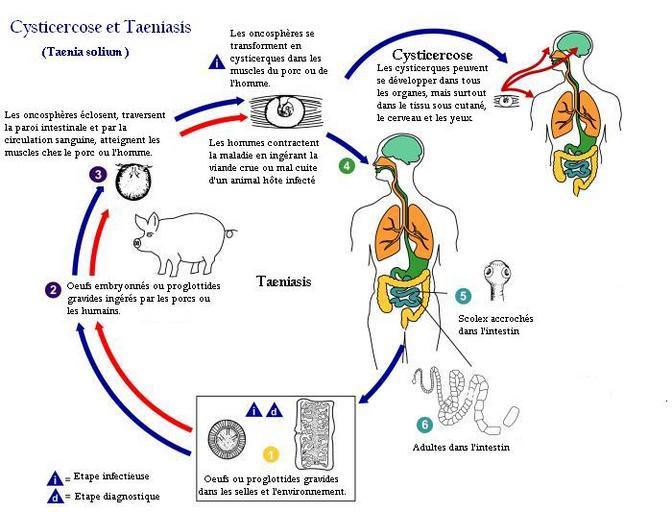MAKE A MEME
View Large Image

| View Original: | Cysticercosis(French_version).jpeg (700x533) | |||
| Download: | Original | Medium | Small | Thumb |
| Courtesy of: | commons.wikimedia.org | More Like This | ||
| Keywords: Cysticercosis(French version).jpeg Taenia soliumPlatyhelminthes Cestoda Taenia Cysticercosis French_version GIF Traduction en français de l ™image suivante Cysticercosis GIF Life cycle of Taenia solium Taeniasis is the infection of humans with the adult tapeworm of Taenia saginata or Taenia solium Humans are the only definitive hosts for T saginata and T solium Eggs or gravid proglottids are passed with feces ; the eggs can survive for days to months in the environment Cattle T saginata and pigs T solium become infected by ingesting vegetation contaminated with eggs or gravid proglottids In the animal's intestine the oncospheres hatch invade the intestinal wall and migrate to the striated muscles where they develop into cysticerci A cysticercus can survive for several years in the animal Humans become infected by ingesting raw or undercooked infected meat In the human intestine the cysticercus develops over 2 months into an adult tapeworm which can survive for years The adult tapeworms attach to the small intestine by their scolex and reside in the small intestine Length of adult worms is usually 5 m or less for T saginata however it may reach up to 25 m and 2 to 7 m for T solium The adults produce proglottids which mature become gravid detach from the tapeworm and migrate to the anus or are passed in the stool approximately 6 per day T saginata adults usually have 1 000 to 2 000 proglottids while T solium adults have an average of 1 000 proglottids The eggs contained in the gravid proglottids are released after the proglottids are passed with the feces T saginata may produce up to 100 000 and T solium may produce 50 000 eggs per proglottid respectively http //www dpd cdc gov/DPDx/HTML/ImageLibrary/ Cysticercosis GIF centre for disease control gov PD-USGov Cysticercosis PD-USGov | ||||